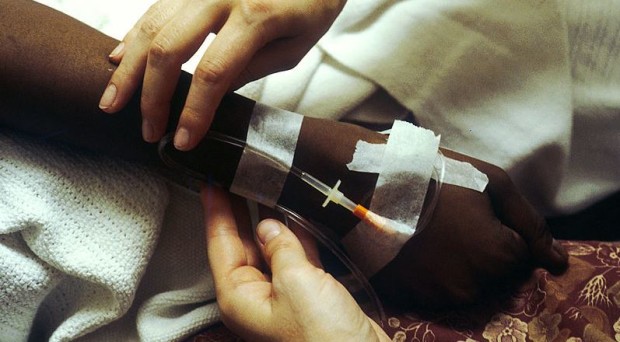
Bacteremia, or bloodstream infection, is a serious side-effect of chemotherapy and a leading cause of death in cancer patients. It is especially common in patients receiving high-dose chemotherapy to prepare for hematopoietic stem cell or bone marrow transplantation to treat hematological diseases.
Bacteria are thought to enter the bloodstream through intestinal lesions due to chemotherapy-induced inflammation of the membrane lining the digestive tract. Once the infection begins, patients’ own immune systems are depleted and are often unable to fight off the pathogens.
Patients with a bloodstream infection have little recourse other than to take various types of antibiotics in an attempt to control the infection. Unfortunately the antibiotics do not always work.
Infection rates are typically between 20-40% or higher in these populations, with subsequent mortality rates as high as 15-30%. Sadly, many people die from the infections that they get as a result of cancer treatment for certain types of cancer.
Who is most at risk?
There are currently no good ways to predict which patients will acquire a bloodstream infection, so preventative regimens vary widely between clinics.
There are currently no good ways to predict which patients will acquire a bloodstream infection, so preventative regimens vary widely between clinics. In some clinics, all patients are given prophylactic antibiotics throughout their chemotherapy.
In other clinics, few or none are given prophylactic antibiotics because the antibiotics lead to increased antibiotic resistance in the patients’ microbiota. Some patients are also given very expensive drugs to stimulate growth of neutrophils, white blood cells that attack and eat infectious bacteria, but doctors do not have a quantitative way of knowing which patients should receive these drugs and when.
Therefore there is an unmet need to predict which patients are most likely to acquire bloodstream infections so that the right patients can receive appropriate therapies to reduce the risk of bloodstream infection and sepsis.
What did we do and what did we find?
In this study we set out to understand how the starting configuration of the gut microbiota, before a patient begins treatment, relates to risk of bloodstream infection. We began by collecting fecal samples from patients with non-Hodgkin’s lymphoma before they began chemotherapy. We sequenced the bacterial DNA to measure the health of the bacterial ecosystem in each patient’s gut.
Using tools from machine learning, we then created an algorithm that can learn which bacteria are good and bad from studying one set of patients
About 40% of our subjects acquired a bloodstream infection. But interestingly we found that those patients may have had more than bad luck going against them. They had significantly different mixtures of gut bacteria than the patients that did not get infections.
Using tools from machine learning, we then created an algorithm that can learn which bacteria are good and bad from studying one set of patients, and can then predict whether a new patient it has not seen before will get an infection, with around 85% accuracy.
Future work
Although our predictive model was quite robust, our findings are still based on a limited number of patients with a single type of chemotherapy at a single clinic. The next step is to validate our approach in a much larger cohort including patients with different cancer types, different treatment types, and from multiple treatment centers.
We also do not know if these bacteria are playing any kind of causal role in the infections, or if they are simply acting as biomarkers for some other predisposing condition in the patient.
Nonetheless, we expect that our results will interest clinicians involved in management of cancer patients, and will break ground for clinical research into the development of similar microbiome-based diagnostic and prognostic models in other diseases.
Comments